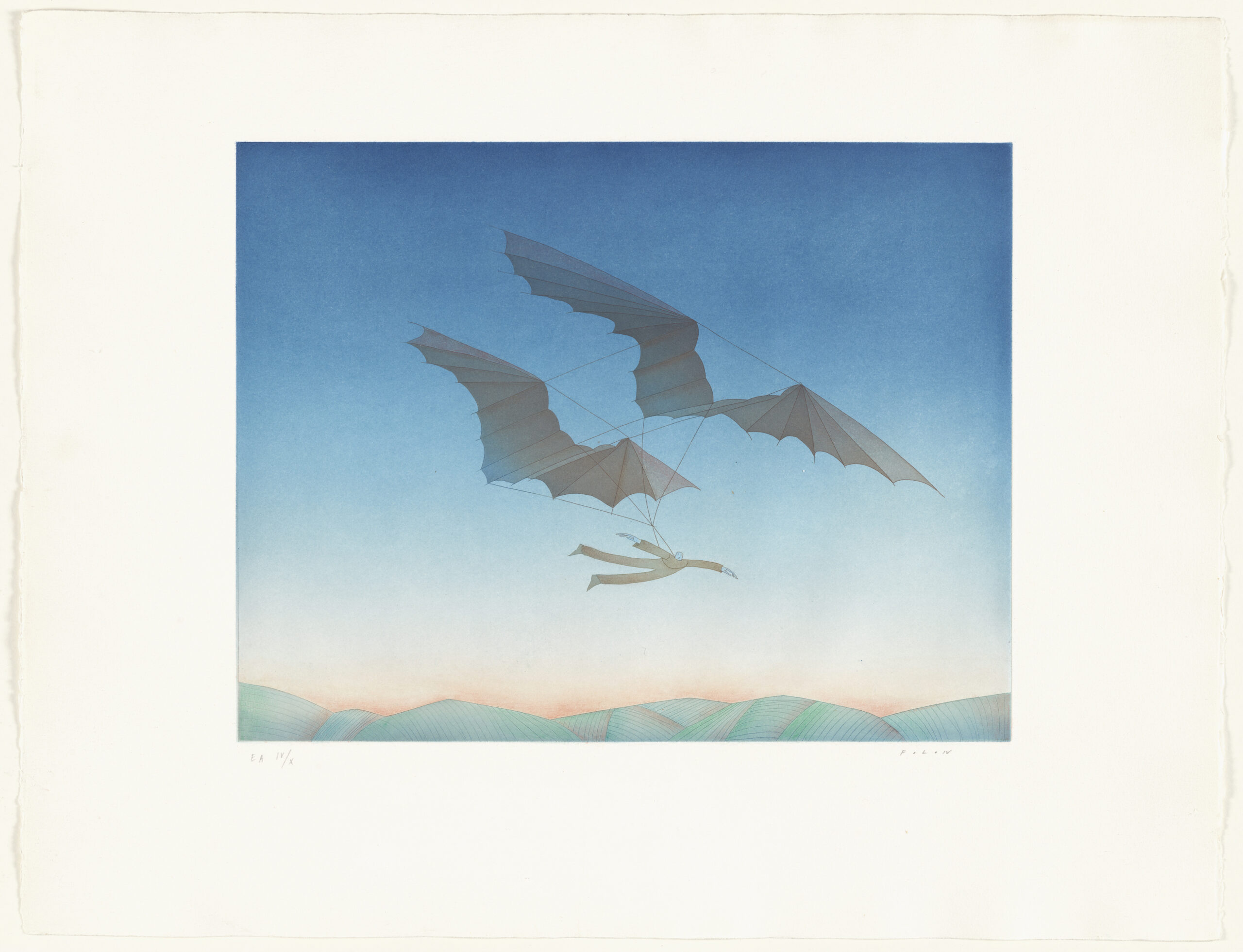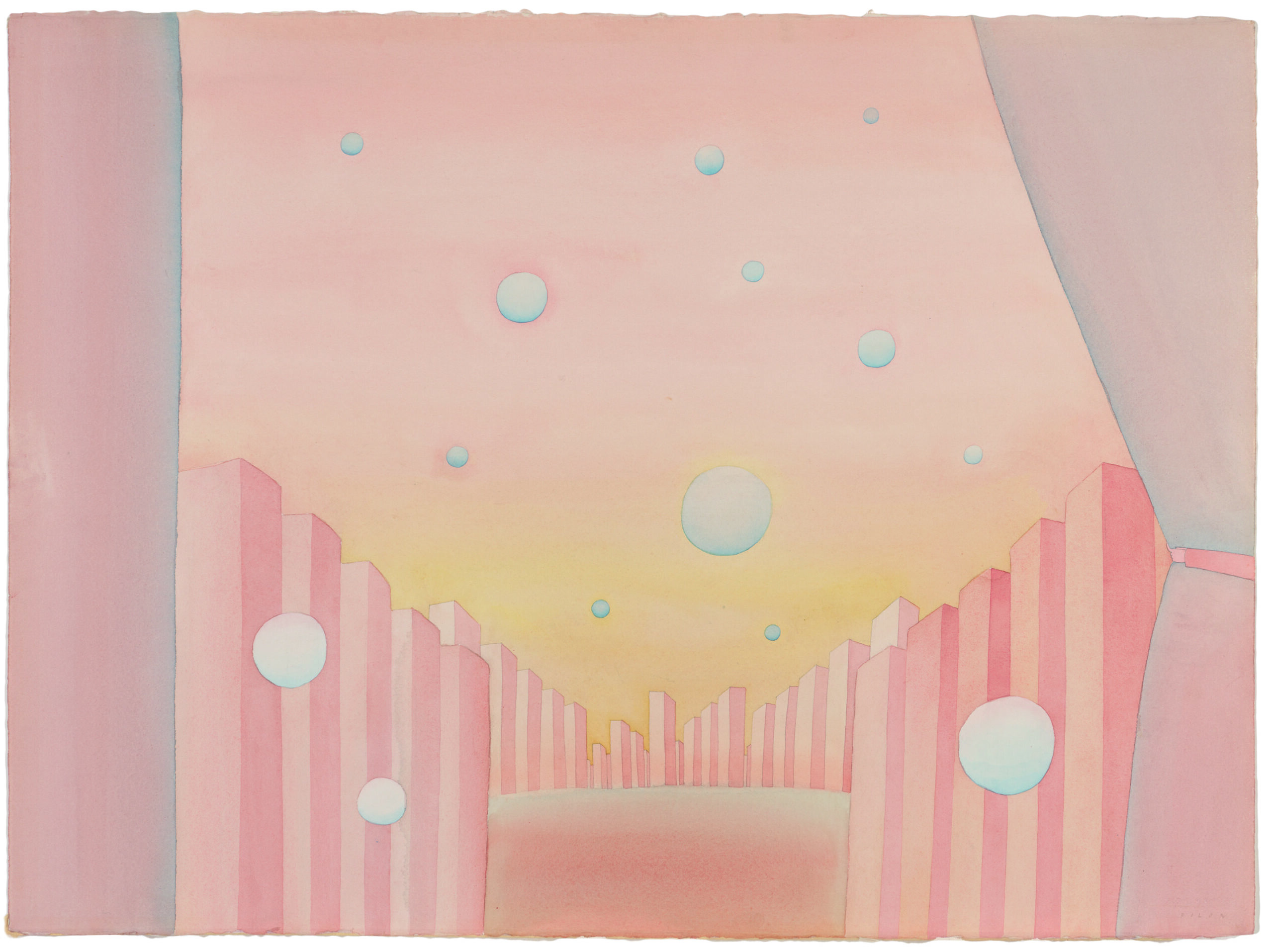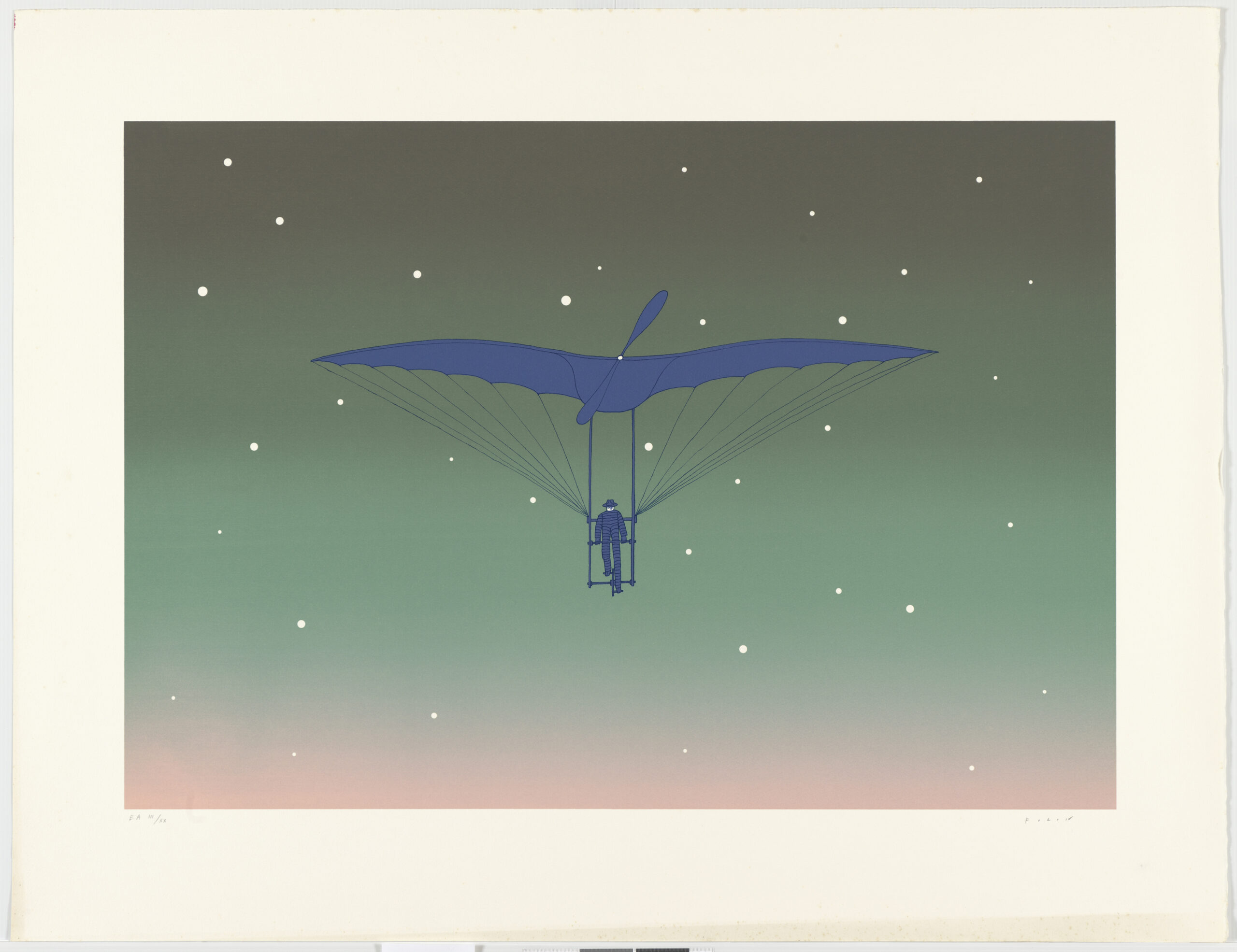Jean-Michel Folon
Jean-Michel Folon (1934-2005) was a Belgian artist internationally renowned for his illustrations, paintings, prints, sculptures, and theatre designs. He was born in Brussels and studied industrial design before settling in Bougival, near Paris, where he developed his unique style. His work, often characterised by solitary figures in urban or natural landscapes, was published in major American magazines and exhibited worldwide. He established the Folon Foundation in La Hulpe, Belgium, to preserve his work. A committed artist and human rights defender, he notably illustrated the Universal Declaration of Human Rights and campaigns for Amnesty International.
The texts and illustrations chosen here focused on air, the key element in Jean-Michel Folon’s artistic creation.
Air – The Wind
“The true subject of my paintings is the wind,” wrote Jean-Michel Folon (1934–2005) one day.
Invisible and yet undeniably present, the wind is a fundamental element in the work of the Belgian artist. A vehicle of flight and freedom, it is the wind that pushes birds toward the horizon, and it is the wind again that lifts the figure when, in a wild dream, he escapes earthly gravity and takes off in search of freedom. Beyond the wind, air itself is also omnipresent—a source of balance and lightness. Many of Folon’s works are indeed scattered with suspended bubbles. Finally, it is in the air as well that the tightrope walker occasionally defies balance, walking along a suspended rope, often attached to nothing at all (The Artist, 1982; The Tightrope Walker, 2002, etc.).
Folon’s fascination with wind and air was not confined to graphic works. He collected antique kites and even designed one in 1972, which was later sold commercially. In the 1990s and 2000s, he took things further by decorating two hot air balloons.
The maladjusted children often dream
And their thoughts are light bubbles
Which may be bubbles of innocence
I imagined for them an engraving titled “Manines”
In Italy, the manines arrive in March
No one knows where they come from
They are little transparent bubbles that rise and fall in the spring air, announcing the return of the beautiful season.
— Jean-Michel Folon
The Kite
“The first man had been walking for days and days. This land, he thought, was nothing but a pile of stones. He moved forward without knowing what to do or where to go. Suddenly, he saw a dot on the horizon that intrigued him. He stopped to see if the dot was coming toward him. No, it was up to him to approach the dot.
So he continued walking and discovered the first tree. He had never seen anything so beautiful, especially since he had never seen any other. Its branches bent under the weight of ripe, abundant fruit. In fact, it was covered in apples. He bit into one, then another. At the foot of the tree flowed a stream, surrounded by reeds. He drank from it and felt better.
Sitting at the base of the tree, he looked up at the sky. That vast immensity filled with clouds constantly forming and dissolving. So many strange white shapes that seemed to be going somewhere. He wished he could write what he was feeling, to pass it on. But he was not a writer.
Still, he could clearly see the first sentence: “In the beginning was the wind.” That’s when he struck his forehead. He had just had the greatest idea anyone had ever had—especially since no one had ever had any ideas before. He stood up to gather some reeds, from which he made a light frame. Then, he removed his only shirt, which had come from God knows where. He hesitated before tearing it, and the sound felt like a tear inside him.
Using his teeth, he made small, irregular holes at regular intervals. With infinite patience, he threaded a flexible reed through them. Then he attached a long string made of reeds tied end to end to the fragile frame. When the task was finished, he looked at his creation. He felt the greatest pride anyone had ever felt—especially since no one had ever felt any pride before.
Then he got up, started running, and the humble construction took flight. It rose into the untouched space of the world’s beginnings. He returned to the apple tree and sat down. With the string in his hand, he watched his creation rise and fall, carried by the wind, before realizing it had the shape of a heart. It was the most beautiful kite he had ever seen—especially since there had never been another. Then he fell asleep.
Several dawns later, he felt in his sleep a hand on his shoulder. He kept his eyes closed for a few moments, wondering where this unknown presence came from. He turned and opened his eyes. In front of him stood the most beautiful woman he had ever seen—especially since he had never seen another.
She simply raised her eyes to the sky. He knew she had seen, from afar, the heart rising and falling, still held by the string of reeds in his hand. The sky had sent him a companion. Time stood still. He wanted to take her hand. And at that instant, the string of reeds snapped. The wind carried the heart away, and it disappeared into the sky. They looked at each other in silence. “Gone with the wind,” she said. They smiled at each other. It reminded him of something, but what, he wondered. Then he offered her an apple. And everything began.”
— Jean-Michel Folon



© Fondation Folon, ADAGP, 2025
